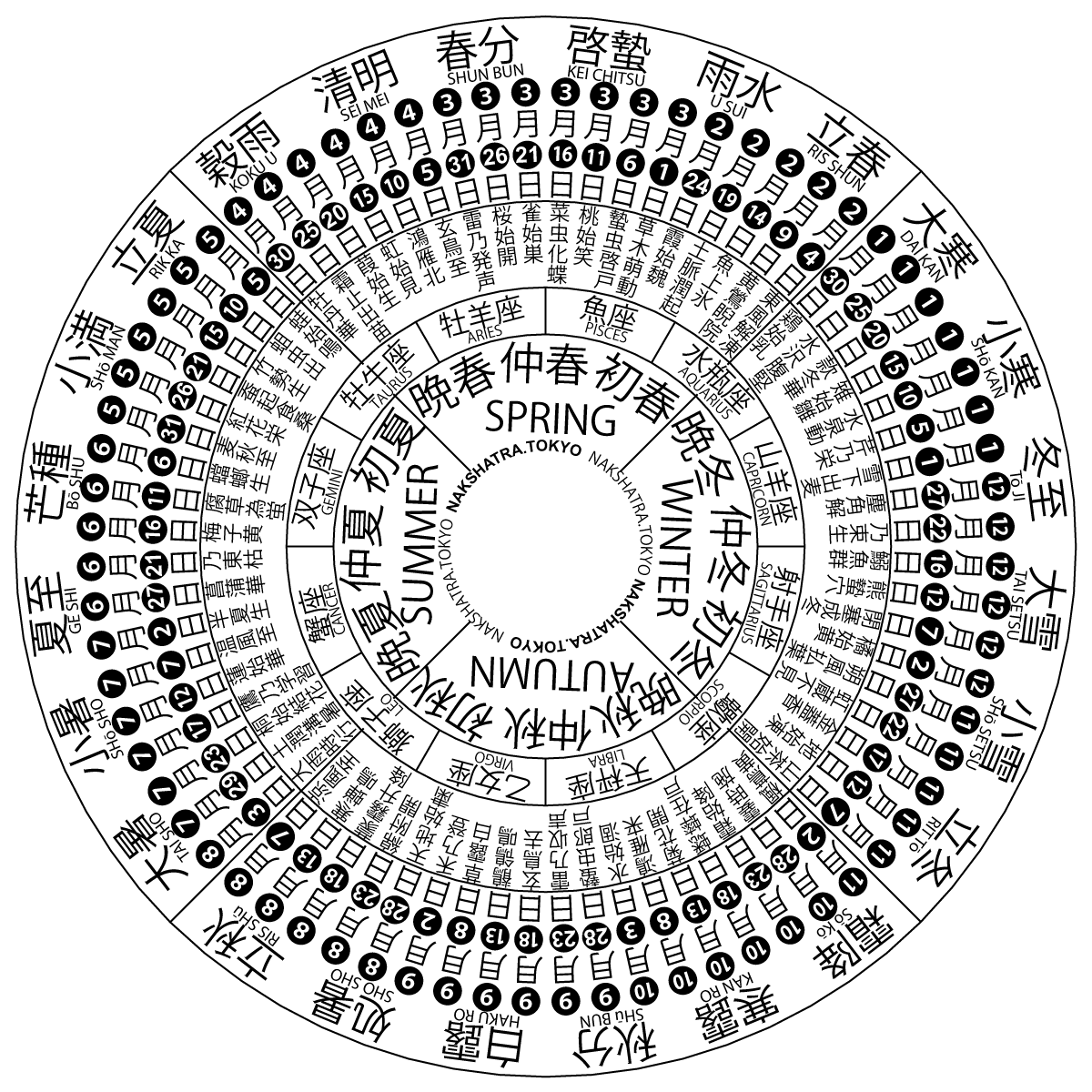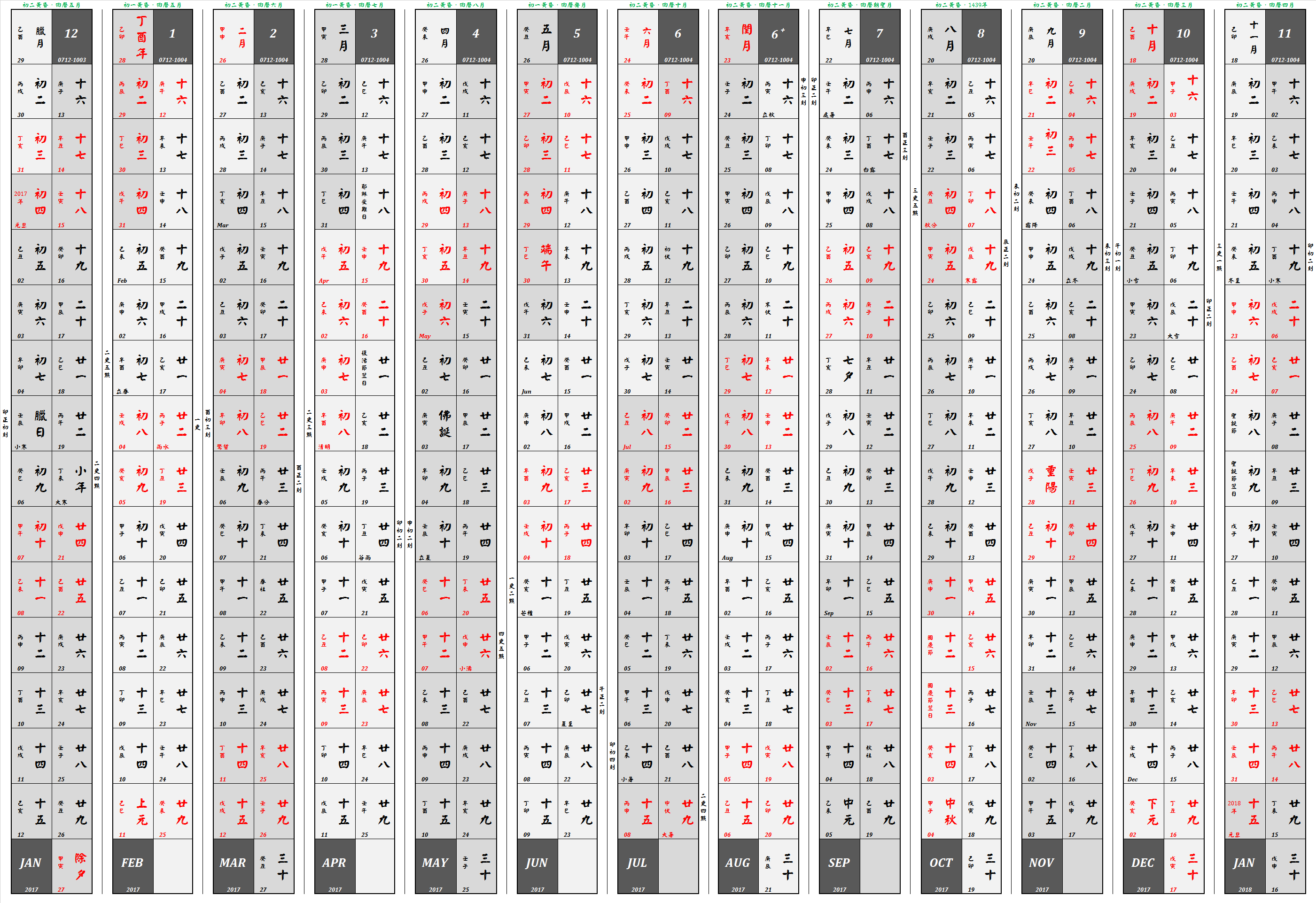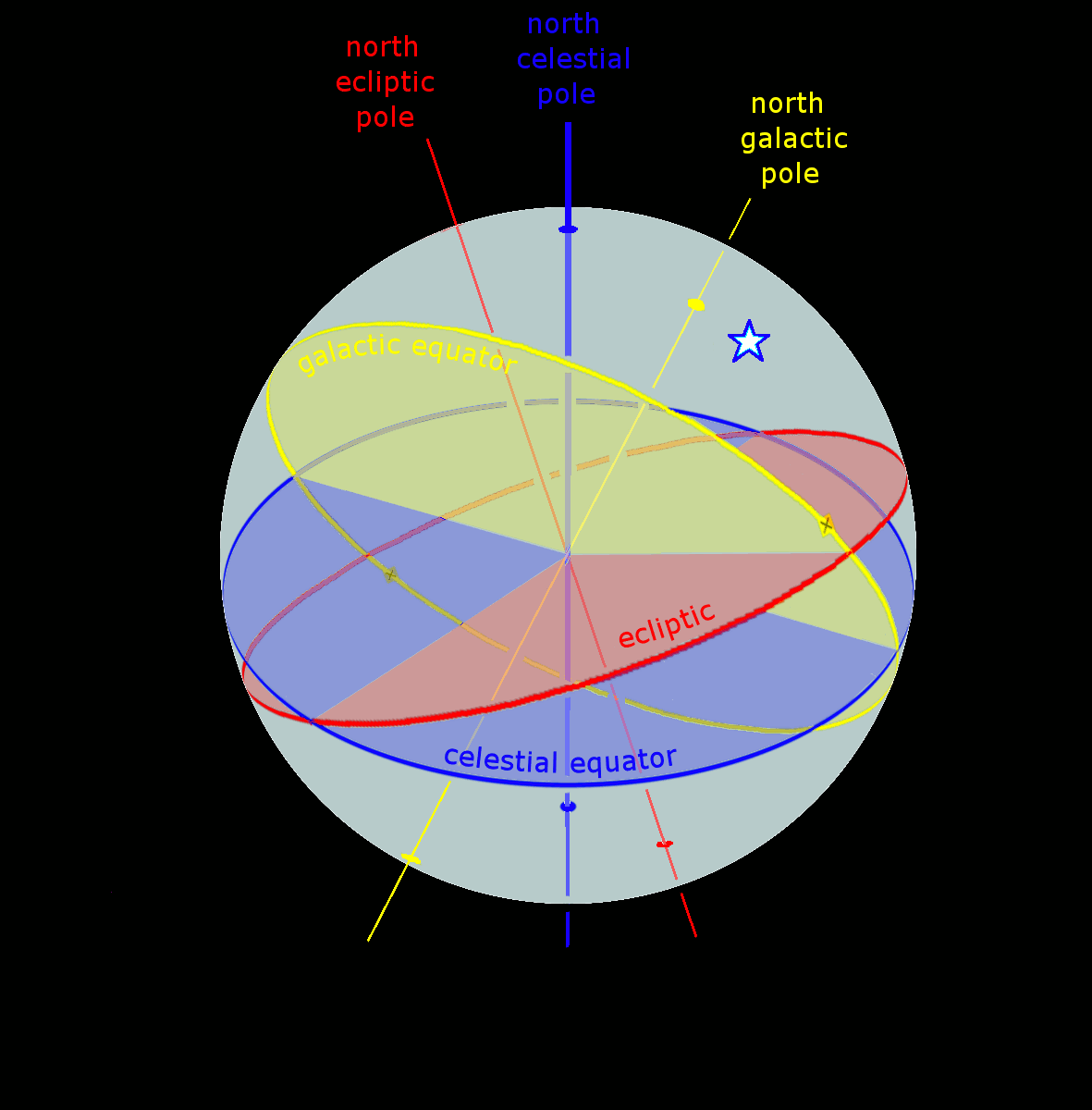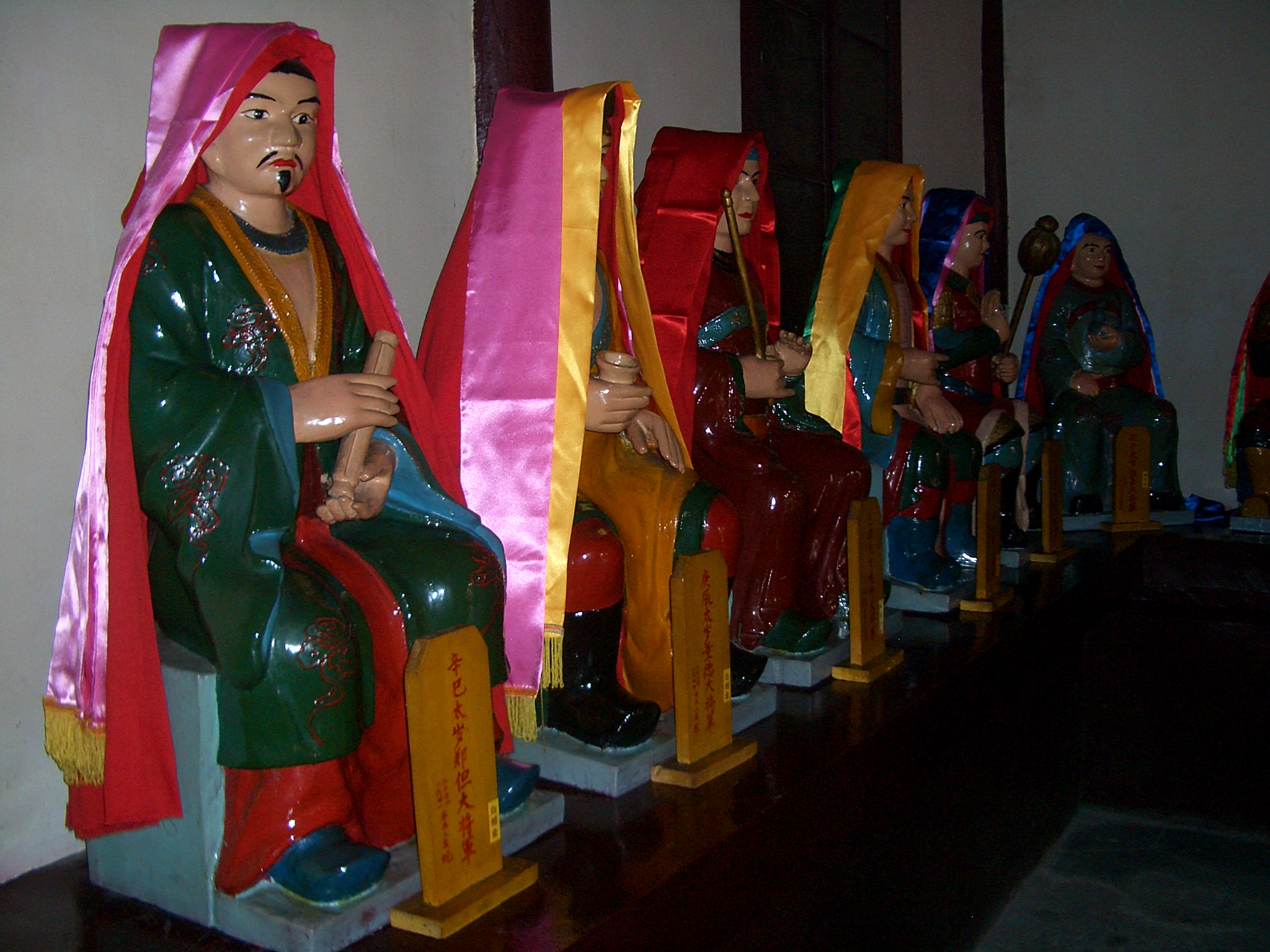|
Risshū
The traditional Chinese calendar divides a year into 24 solar terms. ''Lìqiū'', ''Risshū'', ''Ipchu'', or ''Lập thu'' () is the 13th solar term. It begins when the Sun reaches the celestial longitude of 135° and ends when it reaches the longitude of 150°. It more often refers in particular to the day when the Sun is exactly at the celestial longitude of 135°. In the Gregorian calendar, it usually begins around August 7 and ends around August 23. Liqiu signifies the beginning of autumn in East Asian cultures. Date and time See also * Lughnasadh Lughnasadh, Lughnasa or Lúnasa ( , ) is a Gaels, Gaelic festival marking the beginning of the harvest season. Historically, it was widely observed throughout Ireland, Scotland, and the Isle of Man. Traditionally, it is held on 1 August, or abo ... References {{s-end Autumn 13 ... [...More Info...] [...Related Items...] OR: [Wikipedia] [Google] [Baidu] |
Solar Term
A solar term (or ''jiéqì'', zh, t=節氣, s=节气) is any of twenty-four periods in traditional Chinese lunisolar calendars that matches a particular astronomical event or signifies some natural phenomenon. The points are spaced 15° apart along the ecliptic and are used by lunisolar calendars to stay synchronized with the seasons, which is crucial for agrarian societies. The solar terms are also used to calculate intercalary months; which month is repeated depends on the position of the sun at the time. According to the '' Book of Documents'', the first determined term was Dongzhi (Winter Solstice) by Dan, the Duke of Zhou, while he was trying to locate the geological center of the Western Zhou dynasty, by measuring the length of the sun's shadow on an ancient type of sundial called (). Then four terms of seasons were set, which were soon evolved as eight terms; not until the Taichu Calendar of 104 BC were all twenty-four solar terms officially included in the Chinese ... [...More Info...] [...Related Items...] OR: [Wikipedia] [Google] [Baidu] |
:Category:Chinese Words And Phrases
For articles on words and phrases related to a specific area of China, or to a specific spoken variant, please refer to one of the subcategories. Words A word is a basic element of language that carries meaning, can be used on its own, and is uninterruptible. Despite the fact that language speakers often have an intuitive grasp of what a word is, there is no consensus among linguists on its ... Words and phrases by language {{CatAutoTOC ... [...More Info...] [...Related Items...] OR: [Wikipedia] [Google] [Baidu] |
Suzuki Harunobu
Suzuki Harunobu (; ) was a Japanese designer of woodblock print art in the style. He was an innovator, the first to produce full-color prints () in 1765, rendering obsolete the former modes of two- and three-color prints. Harunobu used many special techniques, and depicted a wide variety of subjects, from classical poems to contemporary beauties. Like many artists of his day, Harunobu also produced a number of , or erotic images. During his lifetime and shortly afterwards, many artists imitated his style. A few, such as Harushige, even boasted of their ability to forge the work of the great master. Much about Harunobu's life is unknown. Influences Though some scholars assert that Harunobu was originally from Kyoto, pointing to possible influences from Nishikawa Sukenobu, much of his work, in particular his early work, is in the Edo style. His work shows evidence of influences from many artists, including Torii Kiyomitsu, Ishikawa Toyonobu, the Kawamata school, and the K ... [...More Info...] [...Related Items...] OR: [Wikipedia] [Google] [Baidu] |
Chinese Calendar
The traditional Chinese calendar, dating back to the Han dynasty, is a lunisolar calendar that blends solar, lunar, and other cycles for social and agricultural purposes. While modern China primarily uses the Gregorian calendar for official purposes, the traditional calendar remains culturally significant. It determines the timing of Chinese New Year with traditions like the twelve animals of the Chinese zodiac, Chinese Zodiac still widely observed. The traditional Chinese calendar uses the Sexagenary cycle, sexagenary cycle, a repeating system of Heavenly Stems and Earthly Branches, to mark years, months, and days. This system, along with astronomical observations and mathematical calculations, was developed to align solar and lunar cycles, though some approximations are necessary due to the natural differences between these cycles. Over centuries, the calendar was refined through advancements in astronomy and horology, with dynasties introducing variations to improve accu ... [...More Info...] [...Related Items...] OR: [Wikipedia] [Google] [Baidu] |
Celestial Longitude
In astronomy, coordinate systems are used for specifying positions of celestial objects (satellites, planets, stars, galaxies, etc.) relative to a given reference frame, based on physical reference points available to a situated observer (e.g. the true horizon and north to an observer on Earth's surface). Coordinate systems in astronomy can specify an object's relative position in three-dimensional space or plot merely by its direction on a celestial sphere, if the object's distance is unknown or trivial. Spherical coordinates, projected on the celestial sphere, are analogous to the geographic coordinate system used on the surface of Earth. These differ in their choice of fundamental plane, which divides the celestial sphere into two equal hemispheres along a great circle. Rectangular coordinates, in appropriate units, have the same fundamental () plane and primary (-axis) direction, such as an axis of rotation. Each coordinate system is named after its choice of fundamenta ... [...More Info...] [...Related Items...] OR: [Wikipedia] [Google] [Baidu] |
Gregorian Calendar
The Gregorian calendar is the calendar used in most parts of the world. It went into effect in October 1582 following the papal bull issued by Pope Gregory XIII, which introduced it as a modification of, and replacement for, the Julian calendar. The principal change was to space leap years slightly differently to make the average calendar year 365.2425 days long rather than the Julian calendar's 365.25 days, thus more closely approximating the 365.2422-day tropical year, "tropical" or "solar" year that is determined by the Earth's revolution around the Sun. The rule for leap years is that every year divisible by four is a leap year, except for years that are divisible by 100, except in turn for years also divisible by 400. For example 1800 and 1900 were not leap years, but 2000 was. There were two reasons to establish the Gregorian calendar. First, the Julian calendar was based on the estimate that the average solar year is exactly 365.25 days long, an overestimate of a li ... [...More Info...] [...Related Items...] OR: [Wikipedia] [Google] [Baidu] |
Coordinated Universal Time
Coordinated Universal Time (UTC) is the primary time standard globally used to regulate clocks and time. It establishes a reference for the current time, forming the basis for civil time and time zones. UTC facilitates international communication, navigation, scientific research, and commerce. UTC has been widely embraced by most countries and is the effective successor to Greenwich Mean Time (GMT) in everyday usage and common applications. In specialised domains such as scientific research, navigation, and timekeeping, other standards such as Universal Time, UT1 and International Atomic Time (TAI) are also used alongside UTC. UTC is based on TAI (International Atomic Time, abbreviated from its French name, ''temps atomique international''), which is a weighted average of hundreds of atomic clocks worldwide. UTC is within about one second of mean solar time at 0° longitude, the currently used prime meridian, and is not adjusted for daylight saving time. The coordination of t ... [...More Info...] [...Related Items...] OR: [Wikipedia] [Google] [Baidu] |
Sexagenary Cycle
The sexagenary cycle, also known as the gānzhī (干支) or stems-and-branches, is a cycle of sixty terms, each corresponding to one year, thus amounting to a total of sixty years every cycle, historically used for recording time in China and the rest of the East Asian cultural sphere, as well as in Southeast Asia. It appears as a means of recording days in the first Chinese written texts, the oracle bones of the late second millennium BC Shang dynasty. Its use to record years began around the middle of the 3rd century BC. The cycle and its variations have been an important part of the traditional calendrical systems in Chinese-influenced Asian states and territories, particularly those of Japan, Korea, and Vietnam, with the old Chinese system still in use in Taiwan, and in Mainland China. In India, the Ahom people (descendants of the Dai people of Yunnan who migrated to Assam in the 13th century) also used the sexagenary cycle known as Lak-Ni. This traditional metho ... [...More Info...] [...Related Items...] OR: [Wikipedia] [Google] [Baidu] |
JPL Horizons On-Line Ephemeris System
JPL Horizons On-Line Ephemeris System provides access to key Solar System data and flexible production of highly accurate ephemerides for Solar System objects. Osculating elements at a given epoch (such as produced by the JPL Small-Body Database) are always an approximation to an object's orbit (i.e. an unperturbed conic orbit or a " two-body" orbit). The real orbit (or the best approximation to such) considers perturbations by all planets, a few of the larger asteroids, a few other usually small physical forces, and requires numerical integration. Jet Propulsion Laboratory (JPL) ephemerides do not use things such as periods, eccentricities, etc. Instead, JPL integrates the equations of motion in Cartesian coordinates (x,y,z), and adjusts the initial conditions in order to fit modern, highly accurate measurements of planetary positions. Since August 2013, Horizons has been using ephemeris DE431. During the week of 12 April 2021, the Horizons ephemeris system was updated t ... [...More Info...] [...Related Items...] OR: [Wikipedia] [Google] [Baidu] |
Lughnasadh
Lughnasadh, Lughnasa or Lúnasa ( , ) is a Gaels, Gaelic festival marking the beginning of the harvest season. Historically, it was widely observed throughout Ireland, Scotland, and the Isle of Man. Traditionally, it is held on 1 August, or about halfway between the summer solstice and september equinox, autumn equinox. In recent centuries, some celebrations have shifted to Sundays near this date. Lughnasadh is one of Quarter days, the four Gaelic seasonal festivals, along with Samhain, Imbolc, and Beltane. It corresponds to the Welsh and the English Lammas. Lughnasadh is mentioned in early Irish literature and has Celtic polytheism, pagan origins. The festival is named after the god Lugh. In the Middle Ages, it involved great gatherings that included ceremonies, athletic contests (most notably the Tailteann Games (ancient), Tailteann Games), horse racing, feasting, matchmaking, and trading. According to folklorist Máire MacNeill, evidence suggests that the religious rites in ... [...More Info...] [...Related Items...] OR: [Wikipedia] [Google] [Baidu] |
Dashu (solar Term)
The traditional Chinese calendar divides a year into 24 solar terms. ''Dàshǔ'' ( zh, c=大暑, p=dàshǔ), ''Taisho'', ''Daeseo'', or ''Đại thử'' (Chinese and Japanese: 大暑; pinyin: ''dàshǔ''; rōmaji: ''taisho''; Korean: 대서; romaja: ''daeseo''; Vietnamese: ''đại thử''; "major heat") is the 12th solar term. It begins when the Sun reaches the celestial longitude of 120° and ends when it reaches the longitude of 135°. It more often refers in particular to the day when the Sun is exactly at the celestial longitude of 120°. In the Gregorian calendar The Gregorian calendar is the calendar used in most parts of the world. It went into effect in October 1582 following the papal bull issued by Pope Gregory XIII, which introduced it as a modification of, and replacement for, the Julian cale ..., it usually begins around 22 July (23 July Chinese lunisolar calendar time) and ends around 7 August. Date and time References {{s-end 12 Summer ... [...More Info...] [...Related Items...] OR: [Wikipedia] [Google] [Baidu] |








